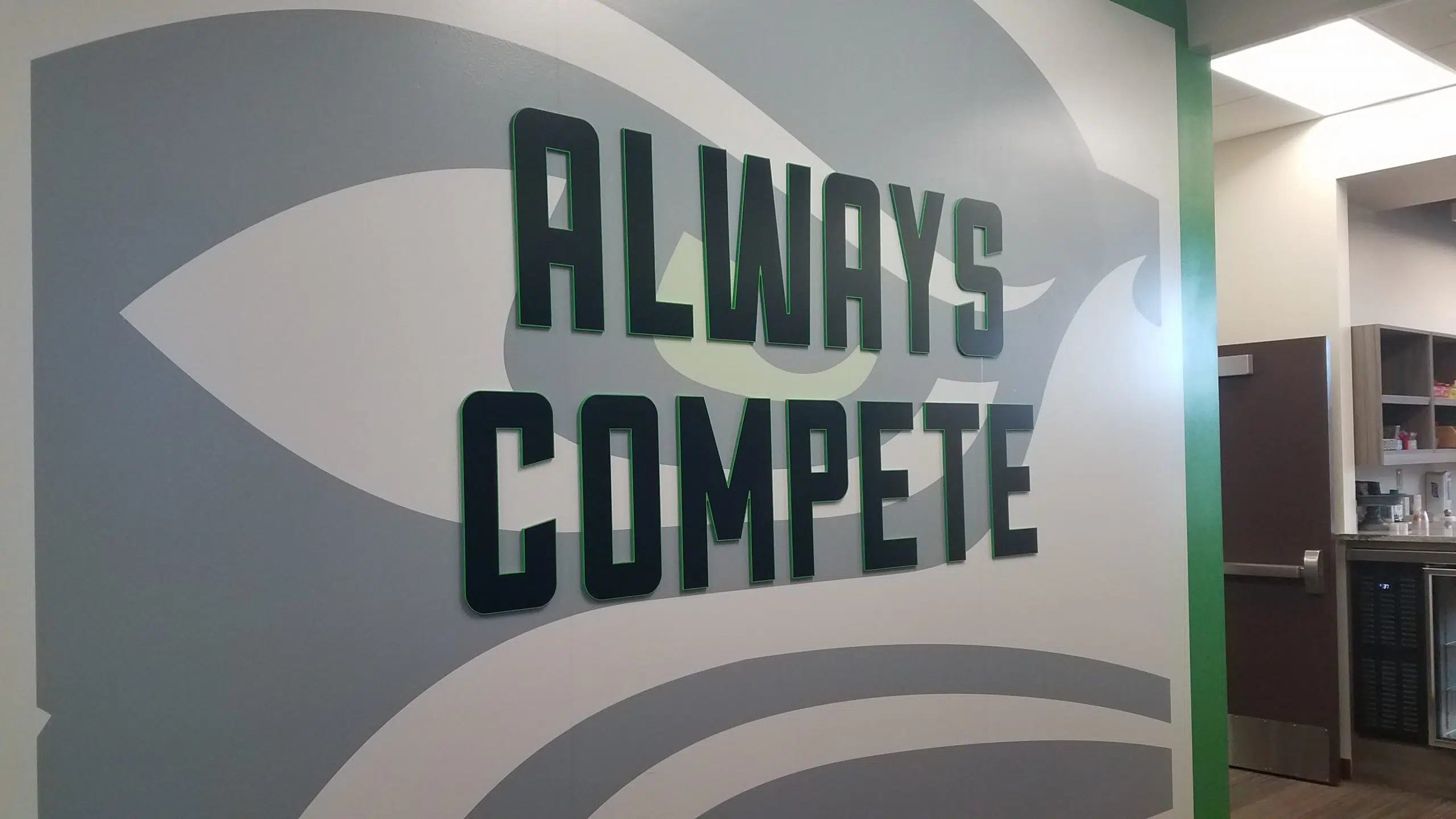As a parent, there are few things I love more than watching my son play sports – witnessing his dedication, his athleticism, his sportsmanship. Watching him do something he loves.
But there’s always that nagging worry – what if he gets hurt? There’s so much out of my control that I’m constantly fearful he’ll endure some major injury.
But parents, here’s the thing. Most sports injuries don’t come from a big hit on the football field, a rolled ankle on the soccer pitch, or a line drive straight back at the pitcher. Most injuries occur before the game – during practice, as a result of repetitive stress, or due to poor technique. These are the injuries that pose the biggest risks to our kids – and they are totally preventable.
This post is sponsored by the National Athletic Trainers’ Association.
The problem is, most of the adults working with our kids don’t know how to prevent them. Yes, coaches love the game and love our kids – but they don’t have the medical knowledge necessary to prevent or treat injuries while optimizing a player’s game.
So who does?
An athletic trainer.
 What is an Athletic Trainer?
What is an Athletic Trainer?
An athletic trainer is a highly skilled healthcare professional who has specific training in physiology to prevent, recognize, and treat sports injuries. They work in tandem with coaches and other team members to optimize player performance while keeping (or getting) them healthy.
I recently had the chance to sit down with David Stricklin, Head Athletic Trainer for the Seattle Seahawks. And while my inner fangirl was squealing with glee to be inside my favorite team’s headquarters, outwardly I was on my best professional behavior and got some really good insight into what an athletic trainer does, and how they can help keep our kids safe.
Turns out, a lot of what they do at the pro level is applicable to high school and youth leagues, too.
What Does an Athletic Trainer Do?
Mr. Stricklin explained that athletic trainers work with multiple departments within the organization to optimize the health, safety, and performance of each individual player. Acting almost as an interpreter, they are charged with collecting information from multiple sources and translating it into a training recommendation that other parties or players will understand.
For example, they work closely with team statisticians on performance loads and player capacity; coupled with the information they have on each team member’s health and the depth of knowledge they have on physiology in general, they may make a recommendation to the coaches to reduce a player’s training for the week. They also have the knowledge of how to appropriately work out a recovering player to build their confidence that they are healed without risking re-injury before clearing them to return to practice, or to coordinate with the equipment staff when gear is ill-fitting and needs to be adjusted to improve player comfort and performance.
Without the specific sports physiology knowledge of an athletic trainer, the team’s coaches, nutritionists, statisticians, and equipment staff may share information to try to customize player workouts and training plans, but they’d be missing a vital piece of the puzzle.
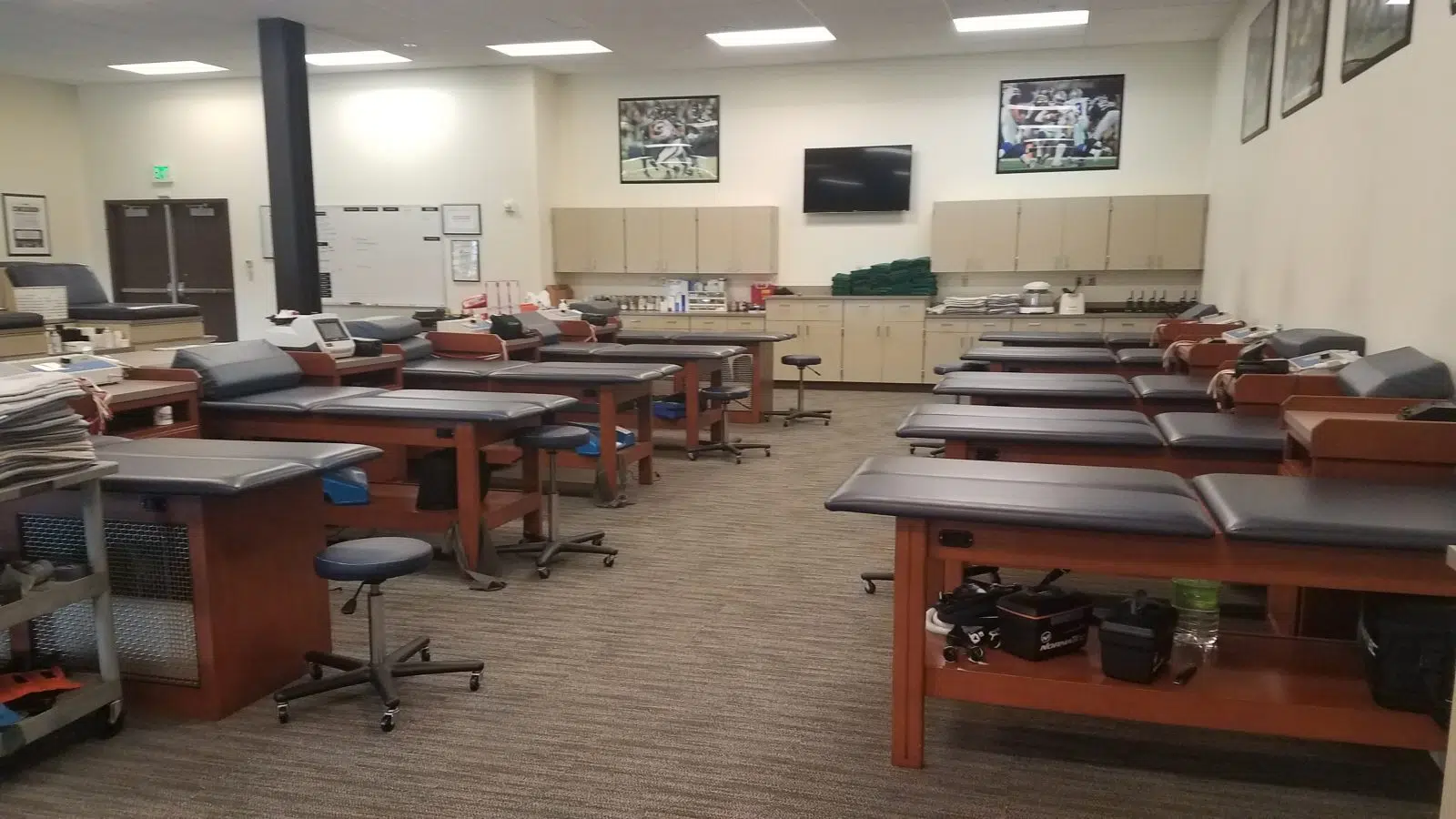
Mr. Stricklin also explained that while athletic trainers are on the sidelines helping players during the games, they also watch games differently than the average coach, fan, or parent. Athletic trainers can recognize signs of concussion, injury, dehydration, or extreme exertion that others who aren’t trained in the field of sports medicine may fail to notice.
How Can My Child’s Team Access an Athletic Trainer?
Talk to your organization’s representative about the importance of hiring an athletic trainer. Even if they can’t afford to have one available full-time, see if they can find ways to hire one to be present during games to watch for subtle signs of injury or assess bigger injuries immediately after they occur. Advocate for the safety of our kids! If your organization is unable to afford an athletic trainer at all, there may be some physical therapy or sports medicine clinics that are willing to do community service or pro bono work.
To find an ATC (certified athletic trainer) in your community, click here.
What Other Ways Can I Keep My Child Safe?
Beyond advocating that your child has the supervision of an athletic trainer, Mr. Stricklin had a few more recommendations for parents to help keep their young athletes safe and healthy.
- Hydration. Hydration is essential for health and performance, and it’s not something you can only do on game day. Your child’s body needs to be trained to retain the hydration, and as Stricklin said, “Hydration for Sunday starts on Monday.” Help your child make hydration a habit. Kids should be drinking water most of the time, with sports drinks reserved for during and after physical exertion to help replace lost minerals.
- Nutrition. The body needs good nutrition to function well. Help your child develop habits that will serve them well throughout their life, and teach them about their body’s needs. Make healthy snacks available to your child. In the Seahawks’ players’ lounge, the team nutritionist keeps a huge array of healthy snacks available – along with instructions to help educate players on the best time to enjoy them (pre-, during-, or post-workout).

And do you see what I see here? NFL PLAYERS EAT GOGO SQUEEZE POUCHES AND CHEESE STICKS. Turns out nutrition doesn’t need to be complicated.
- Rest. Encourage your child to listen to their body – when they need to rest, when they need to eat, when they need to take it easy at practice. Teach them that “playing through the pain” doesn’t make them a better team member. Instead, it threatens their long-term health.
- Respect the rules. Rules are always changing in sports – both at the professional level and at the youth level. Most rule changes are born out of a desire to improve safety for the child. Teach your child to respect the rules, and make sure you’re not using language that undermines them in the mind of your child.
- Gear & equipment. Make sure the gear, cleats, and equipment your child is using is the proper size and fits well. Failure to do this can result in injury.
Can I Let My Inner Fangirl Out Now?
I have to say, my visit to the Seahawks HQ was pretty eye-opening and I learned A LOT about how invaluable athletic trainers are to the individual health of players and the overall success of the team.
But my inner fangirl got a few fun pics, too. So I guess it was a successful visit all around!
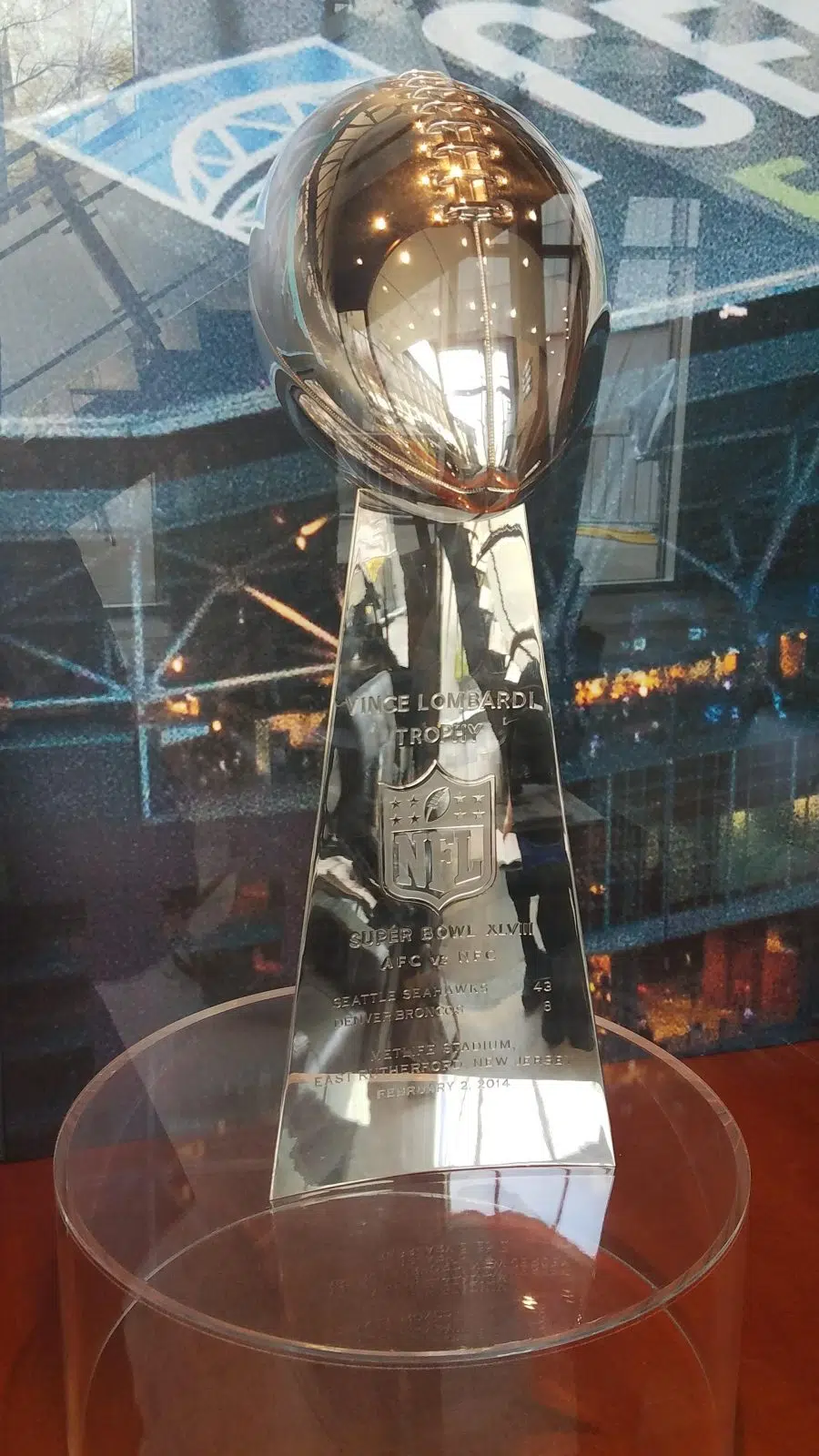
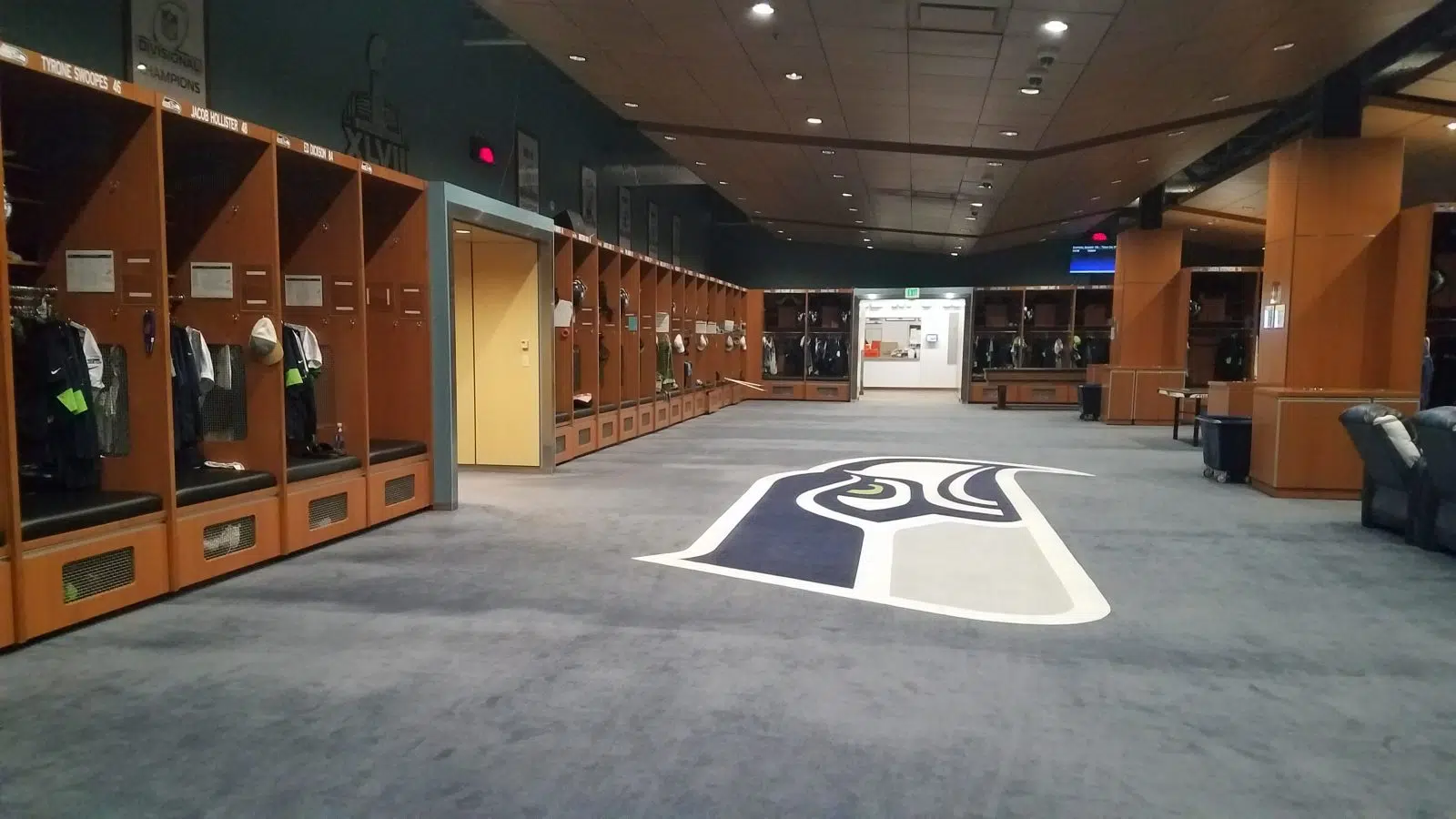
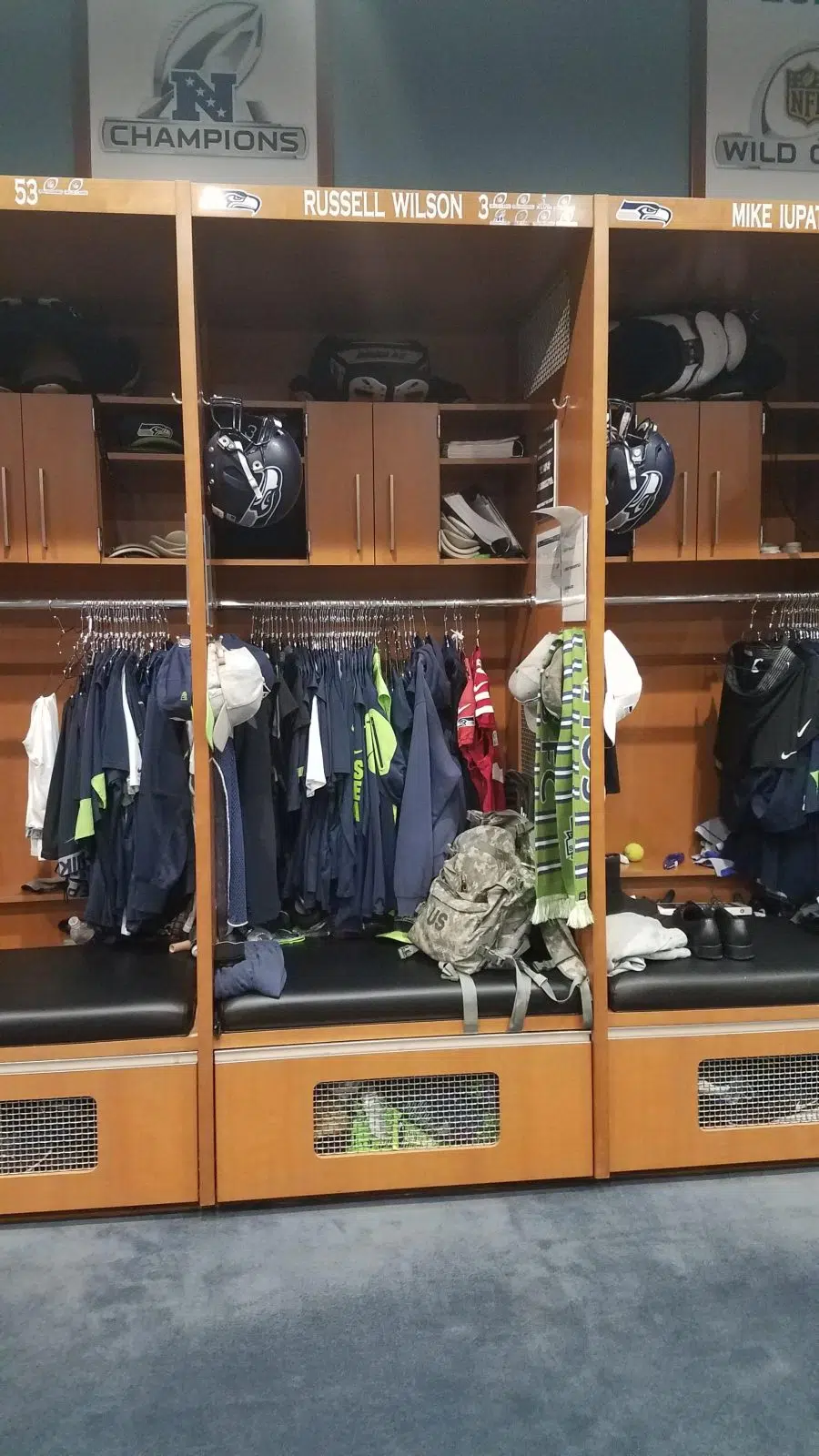
Learn more about youth sports safety at AtYourOwnRisk.org.
